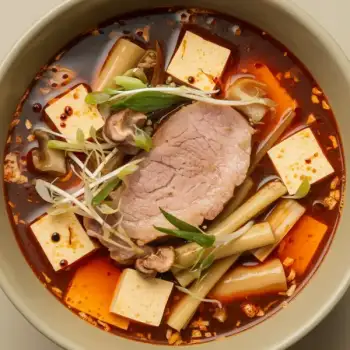


Infused
Chili oil is typically a blend of oil, often a neutral one like vegetable or canola, infused with chili peppers. The intensity of the heat and flavor can vary depending on the type of chili used.
Homemade
Many intermediate and expert cooks prefer making their own chili oil, using a variety of dried chilies and other seasonings to create a unique flavor profile.
Commercial
Commercial chili oils are available in various heat levels and may include additional flavors such as garlic, sesame, or Sichuan peppercorns.




Infused chili oil: Laoganma, Lee Kum Kee
Sichuan chili oil: Chengdu Jiuanfei, S&B

Frying: Some recipes call for frying the chili flakes in oil to create a different flavor profile. This method requires careful heat control to ensure the chili flakes do not burn.
Infusing: The most common method for making chili oil involves heating oil and pouring it over crushed or whole dried chili peppers. The heat of the oil rehydrates the chilies and releases their flavors and heat into the oil. The mixture is then allowed to cool and steep, sometimes for several days, to develop depth of flavor.
Cold Infusion: For a milder chili oil, a cold infusion method can be used where chili flakes are added to room temperature oil and left to infuse over a longer period, often several weeks.













